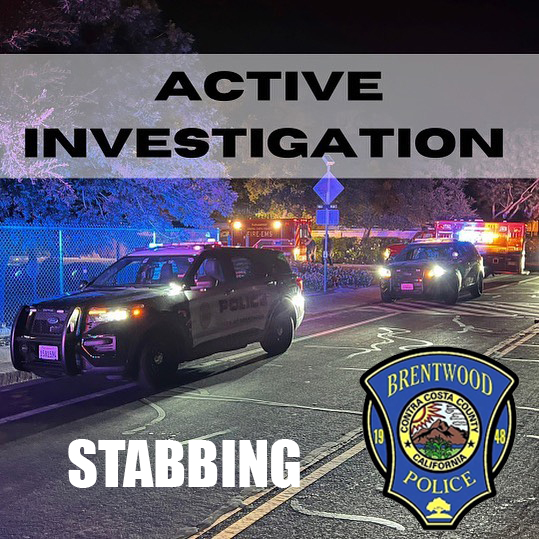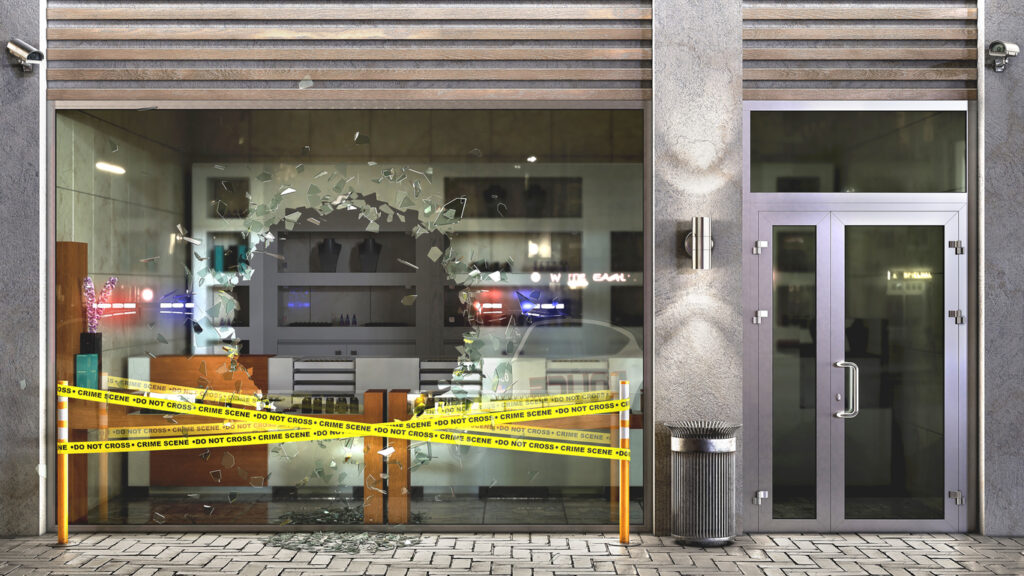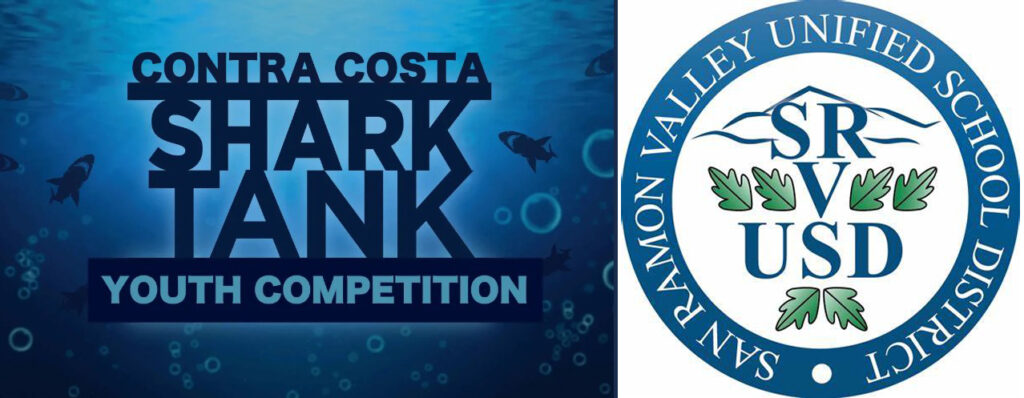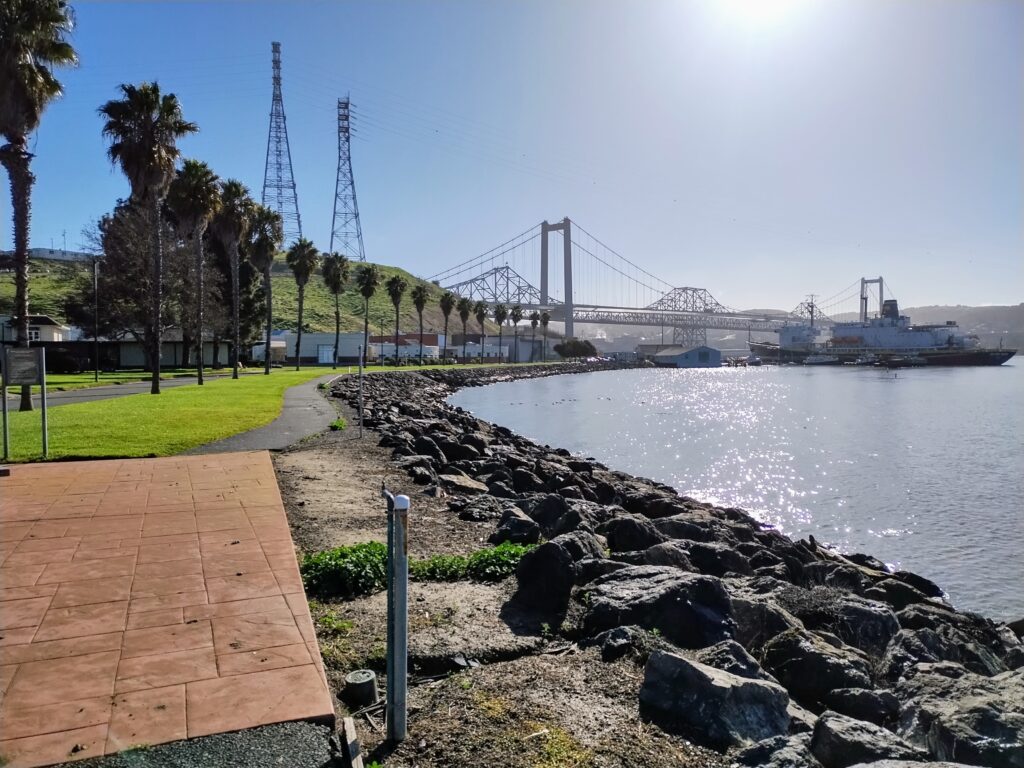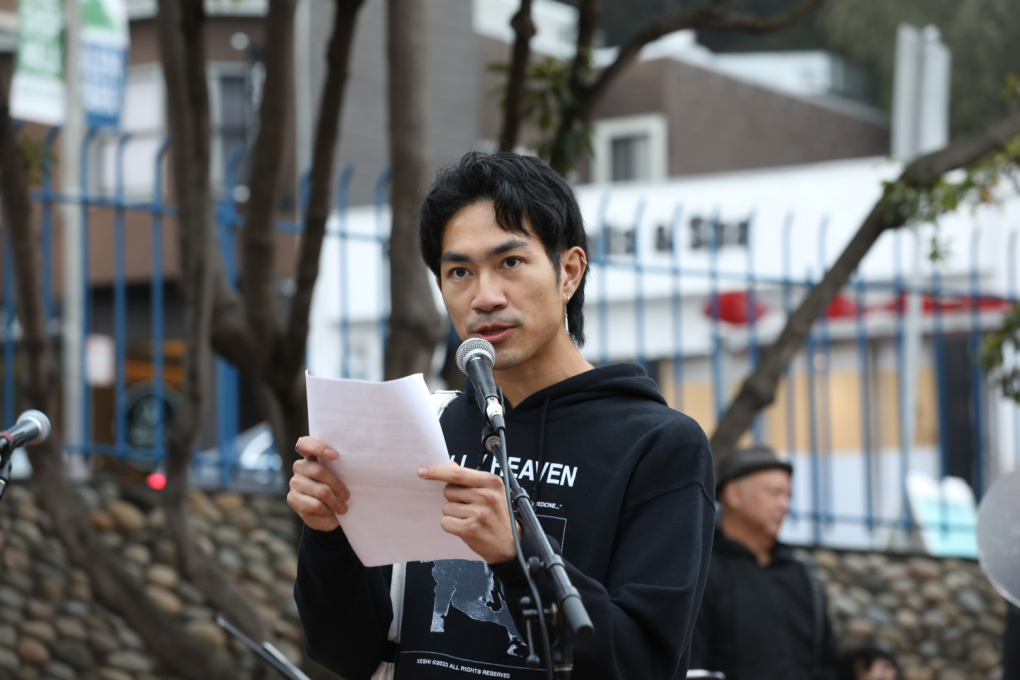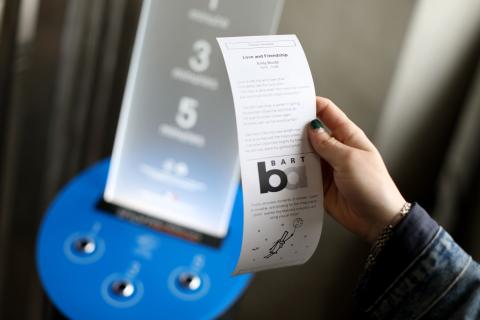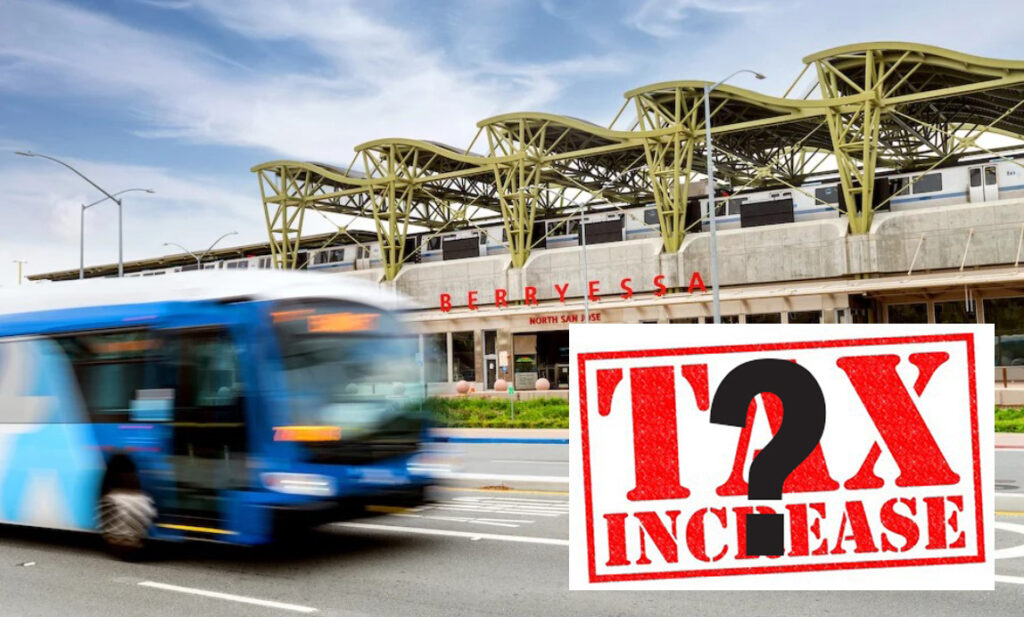By Lindzie Laughridge, Community Engagement Officer, Brentwood Police Department
On Monday, Jan. 29, 2024, at approximately 7:40PM, Brentwood officers were dispatched to a call at the intersection of Balfour Road and Hudson Drive for a report of an adult male who was bleeding. When officers arrived, they discovered the adult male sustained a stab wound and officers immediately provided medical attention on scene. The male, who sustained significant injuries, was transported to a local hospital for further treatment.
Further investigation led officers to a residence associated with the male where contact was made with an adult female who resides at the residence. Based on the officer’s preliminary investigation, there was evidence the incident occurred at the residence.
The male, who is being treated, is expected to survive. There is no threat to public safety at this time, and no indication of any other involved individuals.
This investigation is ongoing, and we will not be releasing any further information at this time. If you have any additional information regarding this incident, you can call the Brentwood Police Department Dispatch line at 925-809-7911.
Read MoreUnified mapping and wayfinding features Golden Yellow, Sky Blue, Dark Blue
By John Goodwin & Gordon Hansen, Metropolitan Transportation Commission
Bay Area transit’s ongoing transformation into a more connected, more efficient and more customer-focused mobility network today took another big step forward as transit agency and MTC staff at the January meeting of the Bay Area’s newly formed Regional Network Management Council unveiled design protoypes for a common set of signs to be used by all agencies at all locations — from individual bus stops to major hubs where multiple systems connect. These prototypes will be installed later this year at the El Cerrito del Norte BART station, the Santa Rosa Transit Mall and the nearby Santa Rosa SMART station.
To establish and reinforce a common identity for all Bay Area transit services, the new signage employs a three-color palette of golden yellow, sky blue and dark blue; as well as simple icons to identify service by trains, buses or ferries. These icons are larger and more visually prominent than the logos of the individual agencies providing the services at each location. The modal icons and the three-color palette will be extended to a new mobile-friendly website to which passengers can connect via QR codes at each bus stop, train station or ferry terminal, providing real-time information along with accessibility features such as audio descriptions and language translation.
“The Mapping and Wayfinding initiative is a brilliant example of regional cooperation,” said MTC Chair and Napa County Supervisor Alfredo Pedroza. “Putting customers’ interests first is the cornerstone of our Transit Transformation Action Plan to increase ridership by making transit faster, cleaner, more comfortable, more convenient and easier to navigate.”
More than 90 percent of Bay Area residents polled by MTC in 2021 identified uniform and easy-to-use transit maps and signage as an important priority for improving the region’s transit network. MTC’s Operations Committee in 2022 approved a contract with Applied Wayfinding Inc. to develop a single mapping and wayfinding system for use by all Bay Area transit agencies. Applied has completed similar projects in London; Toronto; Seattle; Cleveland; Vancouver, B.C.; and elsewhere. The design concepts presented today incorporate comments and recommendations from more than 1,000 Bay Area residents — including transit riders and nonriders, people with limited English proficiency and people with disabilities — who participated in MTC-sponsored surveys, workshops and focus groups. New transit signage will include tactile and Braille elements.
The golden yellow in the three-color palette developed by transit agencies, MTC and the design contractor was chosen to represent the Bay Area’s sunshine and golden hills, with the light blue representing clear skies and the dark blue representing San Francisco Bay, lakes, rivers and other bodies of water. MTC and its partners will invite Bay Area residents and visitors alike to share their thoughts about the newly designed transit signs and digital wayfinding tools once the prototypes — which have not yet been fabricated — are installed at the Santa Rosa and El Cerrito locations.
Design prototypes for a consistent set of transit maps will be presented to the Regional Network Management Council later this year. The Council includes top executives from MTC, the San Francisco Municipal Transportation Agency, BART, AC Transit, the Santa Clara Valley Transportation Authority (VTA), Caltrain, SamTrans and the Golden Gate Bridge, Highway and Transportation District as well as three general managers representing all other transit agencies serving Bay Area communities.
MTC is the transportation planning, financing and coordinating agency for the nine-county San Francisco Bay Area.
Read More
In less than 30 days to qualify for November 2024 ballot
Over 200,000 voters signed petitions for measure that will reverse Prop 47 to stop retail theft, fentanyl crimes
Sacramento, Calif. — Californians to Reduce Homelessness, Drug Addiction, and Theft announced on Thursday, Jan. 25, 2024, that in less than 30 days, 214,000 California voters have signed the petition to place the Homeless, Drug Addiction, Retail Theft Reduction Act on the November 2024 ballot.
“We have seen a record number of voters seeking to sign the petition to place this measure on the ballot – sometimes waiting in line to do so,” said campaign chair Greg Totten who is also chief executive officer for the California District Attorneys Association. “This is consistent with polling that has shown that 70% of likely California voters support the Homeless, Drug Addiction, Retail Theft Reduction Act. The measure is commonsense and injects accountability back into our laws for repeat offenders of theft and for crimes involving fentanyl and other serious drug crimes.”
A survey of likely California voters found that 70% of voters support the title and summary of the Homeless, Drug Addiction, Retail Theft Reduction Act. The overwhelming support was consistent across every demographic and geography including the Bay Area and Los Angeles. Furthermore, 89% of likely voters support amending Proposition 47 for stronger penalties for those engaged in repeated retail theft and trafficking hard drugs like fentanyl. The measure also includes incentives to complete drug and mental health treatment for people who are addicted to hard drugs. The survey was conducted online from November 8-November 13, 2023, with a margin of error of +/- 2.28%.
Currently, under Prop. 47, retail theft of less than $950 is charged as a misdemeanor.
To qualify the measure for the November 2024 ballot, the law requires 546,651 valid signatures. The campaign is required to notify the Secretary of State after 25% of the signatures from California voters have been collected.
For more information, go to www.CASafeCommunities.com.
If you’re interested in supporting the ballot measure:
SRVUSD student entrepreneurs of 10 finalists to be judged by global business executives Feb. 6
By Ilana Israel, Director of Communications, Family and Community Engagement, San Ramon Valley Unified School District
Of the top ten finalists in the Contra Costa Shark Tank Youth Competition that have been announced, including three teams, five placements went to seven students from Bella Vista, Venture, Dougherty Valley High School, Monte Vista High School, and San Ramon Valley High School in the San Ramon Valley Unified School District. The seven students’ entrepreneurial projects cover various industries, including health care, environmentalism, and health and wellness.
The over 300 Contra Costa Shark Tank Youth Competition applicants were evaluated based on their enthusiasm for entrepreneurship, how the business is presented, the viability of the business and how the prize money will be used to launch a new business or grow an existing business.
The annual competition is open to all Contra Costa County students in kindergarten to 12th grade. The program promotes youth entrepreneurship and teaches important life skills, including perseverance, self-confidence, and financial literacy. Winners receive $1,000 (first place), $500 (second place), and $250 (third place). The competition was created by Maya Hammerman, an entrepreneur and Campolindo High School student, to inspire kids in Contra Costa County to explore entrepreneurship and new business ideas.
The finalists from San Ramon Valley Unified School District are:
- Nicolas Angel-Ordonez & Shashank Koundinya, 11th Grade, San Ramon Valley High School – MiracleAlgae
- Fatimah Hussain, 12th grade, Dougherty Valley High School – Workout Wizard
- Himna Imam & Mahum Malik, 9th grade, Venture & Dougherty Valley High School – Tied Up in a Bow
- Ronen Jain, 10th grade, Monte Vista High School – ElderSafe
- Archit Kundu, 5th grade, Bella Vista Elementary School – Experimental Kids
“I congratulate our students who have followed their entrepreneurial spirit and worked very hard to bring their business ideas to life,” said Dr. John Malloy, Superintendent, San Ramon Valley Unified School District. “I wish our students the best of luck at the final pitch.”
As previously reported, the other five finalists are:
- Valerie Castellanos, Angie Alvarenga, Giovanny Perez, 7th Grade, Summit Tamalpais, Richmond – Loonies
- Hector Espinoza, 12th Grade, Freedom High, Oakley – Synchroma Studio
- Beatrice Roberge, 12th Grade, Campolindo High, Moraga – ScrubWoofer™
- Hunter Smith, 5th Grade, Burton Valley Elementary, Lafayette – SportzCity
- Lydia Stewart, 7th Grade, Homeschool, Antioch – Lydia’s Soap
The top ten finalists will compete in the Finalist Pitch Event on February 6, 2024, at the Lafayette Library (3491 Mt. Diablo Blvd, Lafayette, CA). The judges include Jason Gardner, Founder, Chairman, and Former CEO of Marqeta, Inc.; Stephanie Williams, CFO and Controller of Pacific Gas & Electric Company; Roxanne Christophe, Founder and CEO of Girls Crushing It; Anthony Marino, President of thredUp; and Maya Hammerman, Founder of Moon Blossom Collection.
More information about the event, including tickets, is available at https://contracostasharktank.org/.
About San Ramon Valley Unified School District: Located in the San Francisco Bay Area, San Ramon Valley Unified School District (SRVUSD) is one of the highest-achieving school districts in California. With approximately 29,000 students, the district encompasses the communities of Alamo, Danville, San Ramon, and a small portion of Walnut Creek and Pleasanton.
SRVUSD has been recognized at state and national levels with many awards and achievements. The district is designated by AASA, The School Superintendents Association, as a Learning 2025 Lighthouse District because it serves as a model of positive change in public education and is committed to the whole child. Based on a foundation of academic excellence, SRVUSD’s work is guided by the district’s Strategic Directions, and broadening the definition of success so all students can thrive. The district maintains graduation rates above 96%. The Learner Profile outlines the competencies the district aspires for students to possess upon graduation, preparing students to be Critical Thinkers, Creative Contributors, Intentional Collaborators, Adaptable Learners, and Effective Communicators.
Allen D. Payton contributed to this report.
Read MoreBy Neil Sterud
Nestled amidst the picturesque hills along the San Pablo Bay waterfront, California State University Maritime Academy (Cal Maritime) stands as a hidden gem. Despite being the smallest campus of the CSU system, Cal Maritime boasts an impressive track record far beyond its modest size. Graduates from this maritime-focused institution consistently achieve remarkable success.
However, it’s not just the size that separates. The campus embraces a distinctive culture that sets it apart from other universities. Here, students don uniforms, engage in military-style formations, and unite under the distinctive banner of The Keelhauler.
While enjoying a commendable reputation among those familiar with its offerings, Cal Maritime faces the challenge of limited awareness beyond its niche maritime industry market. The school’s staff recognizes this hurdle, and the academy has been diligently working to overcome it and shed light on the exceptional educational opportunities it offers.
The university’s flagship vessel, Training Ship Golden Bear, has traversed the waters of many countries, embodying the global reach of Cal Maritime. Setting itself apart, the academy mandates an international experience for students pursuing any of its majors. This distinctive feature underscores the institution’s commitment to providing a comprehensive education beyond traditional classroom boundaries.
Specializing in business administration, engineering, marine transportation, oceanography, and international strategy and security, Cal Maritime caters to students with clear aspirations. Notably, the academy is responsible for licensing students entering the United States Coast Guard (USCG) and offers an officer program for those with a patriotic calling to serve our nation.
Furthermore, the university offers a program tailored for individuals aspiring to join the Strategic Sealift Midshipman Force (SSMF), a crucial component of the United States Navy. This initiative equips Navy Reserve Officers with civilian Merchant Mariner credentials and specialized military training. The primary mission of the SSMF is to bolster the United States organic Sealift fleet, particularly in contested environments. Additionally, the force is vital in supporting Maritime Domain Operations and fortifying the Maritime Industrial Base.
In summary, Cal Maritime is a unique educational institution notable for its global exposure, mandatory international programs, and specialized tracks for USCG licensing and the Strategic Sealift Midshipman Force. As awareness about its offerings grows, Cal Maritime is a solid choice for individuals seeking a practical and specialized academic experience.
Sterud is an Antioch resident and a senior at Cal Maritime.
Read MoreJudge grants petition to change his name to “Lamar A. Hernandez-Thorpe”
Changed name on 2024 campaign committee forms last September
By Allen D. Payton
After Antioch Mayor Lamar Thorpe added Hernandez to his last name on his 2024 re-election campaign committee name last September, it was made official on Monday, January 22, 2024. That day Thorpe was granted his petition by Contra Costa Superior Court Judge Virginia M. George to legally change his name to “Lamar Anthony Hernandez-Thorpe” to honor his Mexican foster parents who raised him.
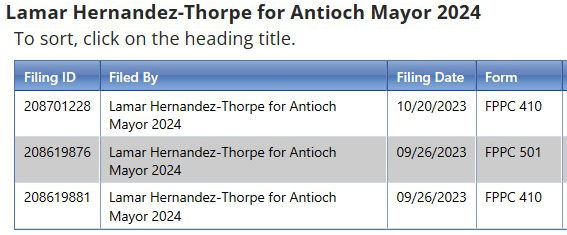
List of 2024 Hernandez-Thorpe’s campaign finance documents filed last fall. Source: Antioch City Clerk
In 1981, Mayor Hernandez-Thorpe was born in prison to a mother addicted to heroin. At two days old, he was placed in foster care and raised by Mexican immigrants in East Los Angeles. As a result, his first language is Spanish. His parents, Guillermo O. and Teresa Hernandez, gave birth to two biological children and, as foster parents, adopted several others, all sharing their last name, “Hernandez”.

Hernandez-Thorpe hugs his father Guillermo at his 2020 election night party when he won the race for Mayor of Antioch. Source: Lamar Hernandez-Thorpe.
Hernandez-Thorpe’s foster parents fought to adopt him legally but failed as his biological mother retained her parental rights. While he is proud of his African American family and heritage, he is equally proud of his Mexican heritage instilled by his parents, the Hernandez’s.
In March of 2023, Mayor Hernandez-Thorpe announced that he would petition to change his name to “Hernandez-Thorpe”. Two days later, his father, Guillermo Hernandez, passed away from prostate cancer.
Hernandez-Thorpe said the process of changing his name was emotionally difficult.
Read MoreSubmissions open Friday, Feb. 9, 2024
By BART.gov
Today, January 19, we are pleased to announce the 2024 BART Lines Teen Poetry Contest. This will be BART’s first writing contest for youth, following last year’s short story contest for adults.
With the BART Lines Teen Poetry Contest, BART is thrilled to lift and amplify the voices of Bay Area youth, whose perspectives, opinion, and ideas are providing us with a roadmap for the future – one that is informed by their lived experiences as well as the unique histories of their communities. We are listening and learning from you!
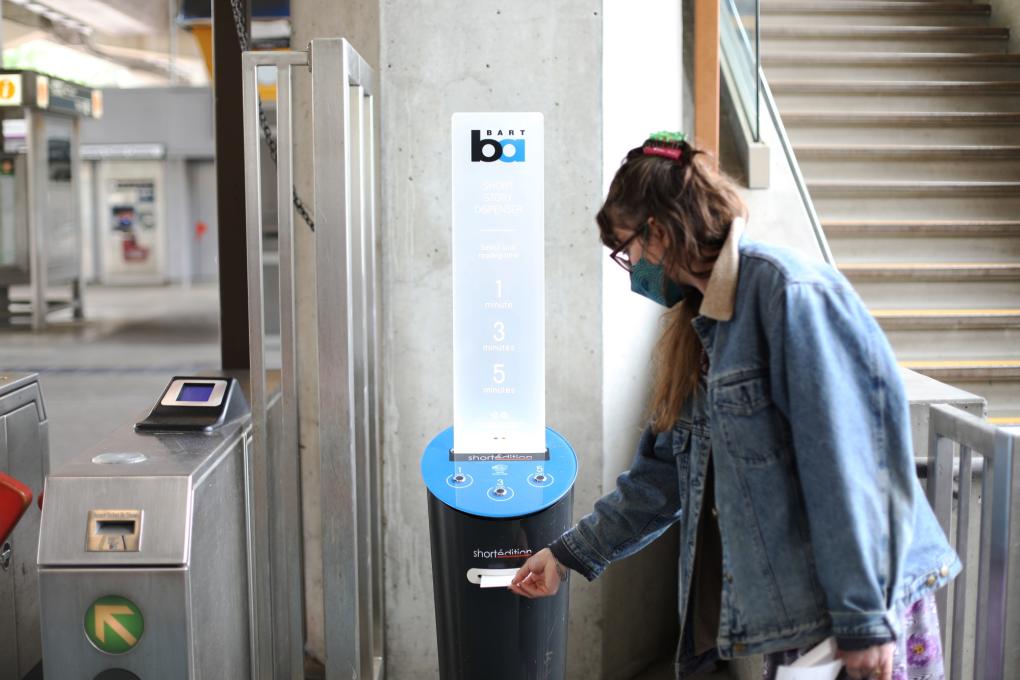
One of BART’s free story dispensers, where the winning poems will be uploaded. The dispensers are like vending machines for creative writing, dispensing stories on eco-friendly recyclable, receipt-like paper. They’re touchless; you just hover your finger over the button to get your story. Photo: BART
By providing a forum for teens’ voices and creativity with BART Lines, we are underlining our belief that the words, ideas, and foresight of youth matter. One day soon, they will be the leaders and visionaries that decide the future of public transportation, and therefore, the future of our region.
BART Lines was created by BART Communications and BART’s Art Program. BART is organizing programs such as BART Lines to get people excited about transit and to emphasize the variety of ways you can use our system, as well as the places it can take you. By partnering with local organizations, including BART Lines partners and judges 826 Valencia and Youth Speaks, we are reinforcing the value arts and cultural organizations bring to BART and our community of riders. These partnerships also highlight the key role public transportation plays in connecting people to experiences that have the power to change and enrich their lives.
BART’s new ridership model emphasizes weeknight and weekend travel, which reinforces the notion that we are not simply a commuter service that transports people to and from work. Our system also carries people to impactful encounters and locations, be it museums, theaters, libraries, public parks, and people, too.
The BART Lines Teen Poetry Contest is one piece of BART’s robust rider engagement strategy that seeks to bring riders together through unique experiences in both virtual and IRL formats. Recent efforts include the BART Anime Project , the One Book One BART book club, Twitch livestreams, creative and informative TikTok content, shareable rider guides, and free celebratory events in stations and trains.
When we ride transit, we hold space for one another. On a crowded train, we remove our backpacks and latch our bikes; we stand for someone who needs to sit; and we scooch to the window seat when space is sparse. Riding transit reminds us that we exist in an interconnected web of others – your fellow passengers, who carry with them their dreams, imaginings, and aspirations (along with their shopping bags and suitcases). BART Lines seeks to celebrates this.
Theme: Bay is Home
The theme for the BART Lines Teen Poetry Contest is “Bay is Home.” We want to read your poems related to the Bay Area. Your submission might describe a location – somewhere you take BART, for example – or maybe a specific spot that inspired your piece. With this theme, we’re asking: How do the many places, people, and aspects of the region make the Bay home?
Submissions-Timeline-Prizes
To submit an entry, authors must be between the ages of 13 and 19 as of March 8, 2024, and reside in one of the five counties where BART operates: San Francisco, San Mateo, Alameda, Contra Costa, and Santa Clara.
To learn more, view the contest rules, and submit your poem, click here.
Thirty finalists will be selected by BART Lines partners 826 Valencia and Youth Speaks, two standout Bay Area organizations lifting the voices of teen poets. Each finalist will receive a $75 honorarium and their poem will be published in BART’s Short Édition Story Dispensers and Story Discs (scroll down for locations), as well as the BART Short Edition website. Select finalists will be invited to participate in a series of readings in and around BART stations (not a requirement for submitting a poem for consideration).
Judges/Partners
 826 Valencia is a nonprofit organization dedicated to supporting under-resourced students ages six to eighteen with their creative and expository writing skills and to helping teachers inspire their students to write. Our services are structured around the understanding that great leaps in learning can happen with individualized attention and that strong writing skills are fundamental to future success.
826 Valencia is a nonprofit organization dedicated to supporting under-resourced students ages six to eighteen with their creative and expository writing skills and to helping teachers inspire their students to write. Our services are structured around the understanding that great leaps in learning can happen with individualized attention and that strong writing skills are fundamental to future success.
Youth Speaks is a leading presenter of Spoken Word performance, education, and youth development programs that was founded in San Francisco in 1996. Founded in 1996 in San Francisco, Youth Speaks is a leading presenter of Spoken Word performance, education, and youth development programs. Trailblazers of local and national youth poetry slams, festivals, and more, Youth Speaks offers a comprehensive slate of literary arts education programs and provides numerous opportunities for youth to be published and heard.
About BART’s Short Édition Story Dispensers and Story Discs
Short Édition is a French publishing house of short literature: poetry, short stories, and flash fiction. In addition to its online platform, Short Édition publishes fiction around the world via its Short Story Dispensers and Story Discs (a digital version of the dispensers that allow you to access unlimited content for free on a smartphone) for the public to enjoy a serendipitous literary experience, free of charge.
The dispensers are like vending machines for creative writing, dispensing stories on eco-friendly recyclable, receipt-like paper. They’re touchless; you just hover your finger over the button to get your story.
BART’s Story Dispensers are currently located at the following stations:
- Balboa Park
- Downtown Berkeley
- Fruitvale
- Pleasant Hill
- San Leandro (pending installation)
BART will soon install Story Discs at the following stations:
- Daly City
- Dublin/Pleasanton
- Embarcadero
About the Artist Behind the Contest Art
Amy Wibowo is a public transit fan and a creative technologist whose art ranges from sweaters made on a hacked knitting machine to RFID jewelry. Her work has been featured in The New Yorker, Forbes, and Vox. She is also the author and illustrator of Bubblesort Zines, a zine series making computer science topics more accessible to a wider audience. Wibowo was chosen from a pool of artists selected from an open call for California-based artists for BART’s Anime Project.
Quotes from Contest Organizers and Partners
Alicia Trost, Chief Communications Officer at BART:
“BART Lines is another way for us to connect with current riders while also attracting new riders. Our adult short story contest helped increase ridership as people came to BART seeking out the story dispensers to read local content. It was thrilling to see people post about their experience on social media, noting they rode just to get a story. I’ll never forget the time our General Manager asked a crowd what their favorite thing about BART was, and someone shouted out: ‘The short story dispensers!’ We have no doubt the teen poetry contest will produce the same results.”
Jennifer Easton, BART Art Program Manager:
“The BART Art Program strives to bring the voices of artists into transit spaces in fresh and compelling ways to reflect our communities, to be in dialogue with our riders, to intrigue and compel. By engaging visual artists, writers, musicians and others in our transit spaces they become dynamic, humane, and more Bay Area. Youth poetry in the Bay is so strong right now, and we’re thrilled to bring a small bit of it to the story dispensers.”
Michelle Robertson, BART Storyteller:
“What do BART and poetry have in common? On BART, not only are we given space to read, write, doze, and dream, but we’re also given the gift of sharing space with other people and the stories they hold in their bodies and minds. BART is the ‘great connector of the Bay Area,’ and with BART Lines, we’re gratified to highlight the sometimes-unexpected connections our system enables, not solely in physical space, but also in transcendental space, where poetry lives and breathes.”
Bita Nazarian, 826 Valencia Executive Director:
“826 Valencia is thrilled to partner with BART to bring youth voices to transit stations across the Bay Area. Seeing one’s writing in print can have a transformative impact on a young person’s life, and we are excited to be a part of such a unique publishing project.”
Michelle Mush Lee, Youth Speaks Executive Director:
“Youth Speaks is thrilled to partner with BART on this unique public art project celebrating youth voice and poetry. I see poetry as a universal journey, much like public transportation. Just as BART transports passengers across city lines and social jurisdictions, poetry transcends political and cultural barriers. In each line and verse, lies an invitation to journey beyond our immediate surroundings, to explore landscapes of emotion and thought. It is our vision at Youth Speaks to harness this power, creating a world where words are not just a means of expression, but a vehicle for transformative change, carrying Bay Area residents closer to ourselves and each other.”
Read More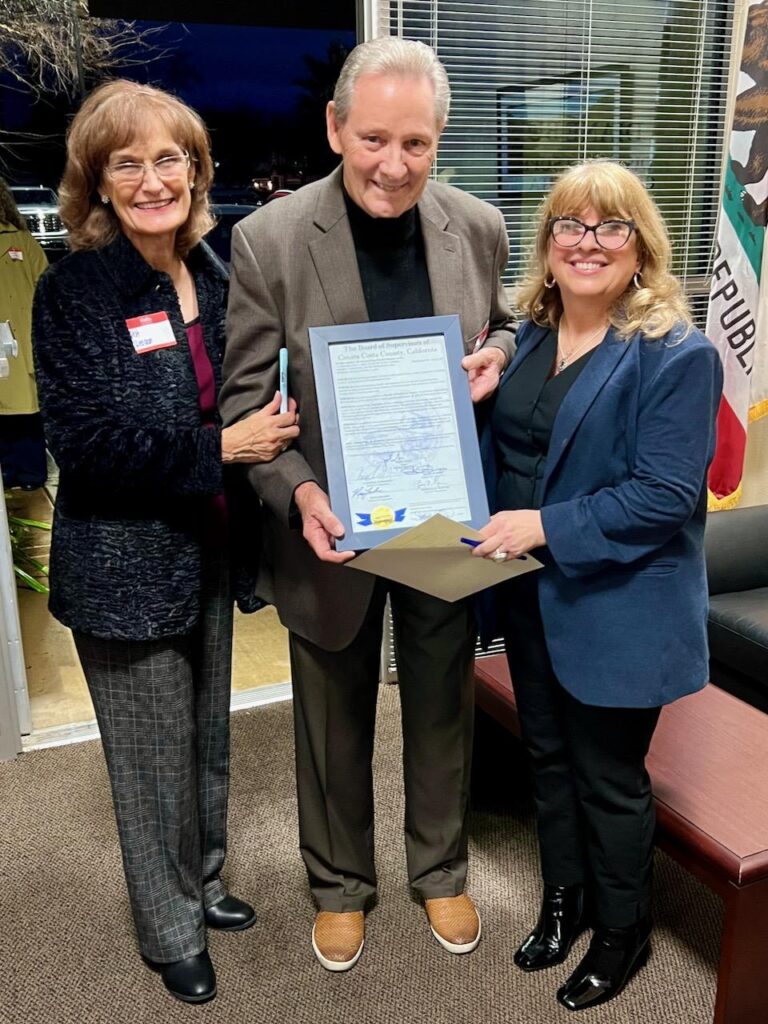
Ron Reagan, accompanied by his wife Pat Reagan, was honored for his 11 years of service to Byron Airport and the Contra Costa County Aviation Advisory Committee. Photo: Office of Supervisor Diane Burgis
Brentwood resident Ron Reagan thanked during her annual District III open house
By Contra Costa County Supervisor Diane Burgis
I was joined by several dozen community members at my 2024 Office Open House on Monday, and had a chance to catch up after the holidays, introduce my newest staff members, and share my plans for the new year.
If you weren’t able to attend, here are some of the highlights:
- East County has twice the number of firefighters on duty at any time than we did three years ago. With two fire stations planned to break ground in Brentwood this year, we’ll have triple the coverage we did in 2021.
- In the coming months, the Delta Protection Commission, which I chair, will submit its management plan for the Delta National Heritage Area, the only National Heritage Area on the West Coast. This will be the biggest step forward for the Delta National Heritage Area since its creation by Congress in 2019.
- Industry-leading aviation testing continues to occur at Byron Airport and Buchanan Field, with companies like Pivotaland Elroy Air leading the way.
- The County is bringing more services to East County, including a County Resource Center, Youth Centers and an African-American Wellness Hub, all of which are in stages of study or planning.
I also had the opportunity to present Brentwood resident Ron Reagan a signed resolution from the Board of Supervisors honoring his work on the Contra Costa County Aviation Advisory Committee.
Ron began serving on the Aviation Advisory Committee in 2012 as the District III representative. Through 11 years of service, he successfully advocated for many of the major improvements to Byron Airport and Buchanan Field, including the establishment of the Bay Area Test Site for drone testing, the 4.14-acre Byron Phase I Development, and the completion of the Byron Aircraft Rescue and Firefighting/Maintenance Storage Building.
My thanks to Ron for his years of service to our airports and our community, and thank you to everyone who attended the open house.
Read MoreTo generate at least $1 to $2 billion annually; priorities include transit, safer streets and roads, resilience
Commissioners considering a variety of tax options
By John Goodwin & Rebecca Long, Metropolitan Transportation Commission
The Metropolitan Transportation Commission (MTC) on Wednesday, Jan. 24, 2024 voted to pursue legislation in Sacramento this year that would enable Bay Area voters to consider a transportation revenue measure as early as November 2026.
The proposed measure aims to advance a climate-friendly Bay Area transportation system that is safe, accessible and convenient for all. This includes preserving and enhancing public transit service; making transit faster, safer and easier to use; repairing local streets and roads; and improving mobility and access for all people, including pedestrians, bicyclists and scooter and wheelchair users.
The vote was approved unanimously by all members present. There are 21 commissioners with three non-voting members. Oakland Mayor Sheng Tao and San Jose Mayor Matt Mahan who are voting members were both absent during the vote.
State Sen. Scott Wiener of San Francisco earlier this month introduced what is known as a spot bill that will be used as the vehicle for authorizing placement of the proposed measure on a future ballot in each of the nine Bay Area counties. The first opportunity to amend Wiener’s Senate Bill 925 will be in mid-February.
While the Commission has not yet identified a revenue source for the proposed measure, MTC Chair and Napa County Supervisor Alfredo Pedroza noted that he and his colleagues are considering a wide range of options.
“Voters traditionally have supported transportation through bridge tolls or sales taxes. Bridge tolls are not an option in this case and we think it’s smart to look at more than a regional sales tax. We’re proposing a few options so we have enough flexibility and enough time to get it right.”
Tax Options & Projected Revenue
Legislators, and MTC staff and commissioners, will consider several options for generating revenue. These may include a sales tax, an income tax, a payroll tax, a square footage-based parcel tax, a Bay Area-specific vehicle registration surcharge with tiered rates based on the value of the vehicle or a regional vehicle-miles traveled charge (VMT) charge subject to prior adoption of a statewide road usage charge not sooner than 2030.
MTC staff recommend raising at least $1 billion to $2 billion per year for robust investments in safe streets and other capital improvements, to improve and expand transit service, and to help Bay Area transit agencies operate their services.
Goals of the Regional Transportation Measure
The revenue measure’s core goal is to advance a climate-friendly transportation system in the Bay Area that is safe, accessible and convenient for all. Focus areas include:
- Protect and enhance transit service. Ensure that current resources are maintained and used effectively; and enhance service frequency and areas served.
- Make transit faster, safer and easier to use. Create a seamless and convenient Bay Area transit system that attracts more riders by improving public safety on transit; implementing the Bay Area Transit Transformation Action Plan; and strengthening regional network management.
- Enhance mobility and access for all. Make it safer and more accessible for people of all ages and abilities to get to where they need to go. Preserve and improve mobility for all transportation system users, including people walking, biking and wheeling.
Proposed Expenditure Categories
- Transit transformation: sustain, expand and improve transit service for both current and future riders; accelerate customer-focused initiatives from the Bay Area Transit Transformation Action Plan and other service improvements that are high priorities for Bay Area voters and riders; and help fund the transition to zero-emission transit.
- Safe streets: transform local streets and roads to support safety, equity and climate goals, including through pothole repair, investments in bicycle/pedestrian infrastructure, safe routes to transit and other safety enhancements.
- Connectivity: fund mobility improvements that close gaps and relieve bottlenecks in the existing transportation network in a climate-neutral way.
- Climate resilience: fund planning, design and/or construction work that protects transportation infrastructure and nearby communities from rising sea levels, flooding, wildfires and extreme heat.
Transportation Measure Highlights
This measure reflects feedback from Commissioners, key legislative leaders and other stakeholders, including:
- Improving transit coordination by strengthening MTC’s role as regional transit network manager;
- A focus on Bay Area Transit Transformation Action Plan (TAP) action items and other customer facing policies that would benefit from a regional approach, such as ambassadors to assist riders and support a safe atmosphere;
- Flexibility in the amount of revenue requested, as well as the way that funding could be generated;
- Flexibility in spending priorities as the region’s needs evolve with time; and
- The “North Star” vision statement, which includes greenhouse gas emission-reduction tools, such as:
- A Transportation Demand Management mandate that encourages Bay Area employees to commute to work in ways other than driving to work alone; and
- A limitation on how money could be spent on highway-widening projects.
Just as MTC commissioners have proposed a range of tax options, so too have they identified multiple expenditure categories.
“We recognize that we’ll be asking voters to take on a heavy lift,” acknowledged Pedroza. “The big lesson from COVID is the need to transform both our transit network and the way we pay to operate it. But we also need to transform our local streets and roads to fix potholes and make the roads safer for walking and biking. We need to improve connectivity and do it in a way that doesn’t encourage people to drive more. And we need to make our transportation infrastructure more resilient to rising sea levels, flooding, wildfires and extreme heat.”
Measure Vision Statement
The commissioners also adopted the following Vision Statement for the measure: “The Bay Area needs a world-class, reliable, affordable, efficient and connected transportation network that meets the needs of Bay Area residents, businesses and visitors while also helping combat the climate crisis; a public transit network that offers safe, clean, frequent, accessible, easy-to-navigate and reliable service, getting transit riders where they want and need to go safely, affordably, quickly and seamlessly; local roads are well maintained; and transit, biking, walking and wheeling are safe, convenient and competitive alternatives to driving; enhancing access to opportunity, lowering greenhouse gas emissions, strengthening the region’s economy and improving quality of life.”
To learn more about the proposed tax measure click, here. To read the supporting documents considered by the Commissioners click, here.
MTC is the transportation planning, financing and coordinating agency for the nine-county San Francisco Bay Area.
Allen D. Payton contributed to this report.
Read More
Open to the public
By Kristi Jourdan, PIO, Office of Communications & Media, Contra Costa County
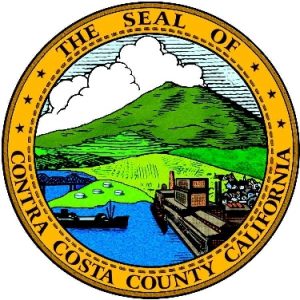 Improving the quality of life for Contra Costa County residents through diverse, equitable, inclusive and accessible programs and services will be the center of the Board of Supervisors annual retreat discussion Tuesday, Jan. 30, at Pittsburg City Hall, 65 Civic Avenue in Pittsburg.
Improving the quality of life for Contra Costa County residents through diverse, equitable, inclusive and accessible programs and services will be the center of the Board of Supervisors annual retreat discussion Tuesday, Jan. 30, at Pittsburg City Hall, 65 Civic Avenue in Pittsburg.
The meeting is scheduled to begin at 9:30 a.m.
“Ensuring we’re meeting community needs is always our focus,” said Board Chair Federal Glover, District 5 Supervisor. “The retreat offers an opportunity for us to anticipate economic factors and continue prioritizing resources accordingly to make sure we’re having the greatest impact through our services.”
Supervisors will receive an economic forecast from Beacon Economics. Office of Racial Equity and Social Justice (ORESJ) Co-Directors Dr. Kendra Carr and Peter Kim will present a summary of ORESJ priorities for the coming year including new initiatives toward expanding equity, building office infrastructure and staffing, developing the Lived Experience Advisory Board, and proposed costs. Pittsburg City Manager Garrett Evans is also scheduled to speak.
The Board of Supervisors sets the direction of the County government and oversees its $5.5 billion budget to serve the 1.2 million residents of this diverse East Bay county with a “AAA” bond rating.
The Board meeting will be accessible in person at Council Chambers, Pittsburg City Hall, 65 Civic Avenue, Pittsburg. The meeting will be televised live on Comcast Cable 27, ATT/U-Verse Channel 99, Astound Channels 32 & 1027, and can be seen live online at www.contracosta.ca.gov or www.contracostatv.org.
For more information about Contra Costa County and its Board of Supervisors, visit the County’s website at www.contracosta.ca.gov or the webpage: https://www.contracosta.ca.gov/7283/Board-of-Supervisors.
Read More






